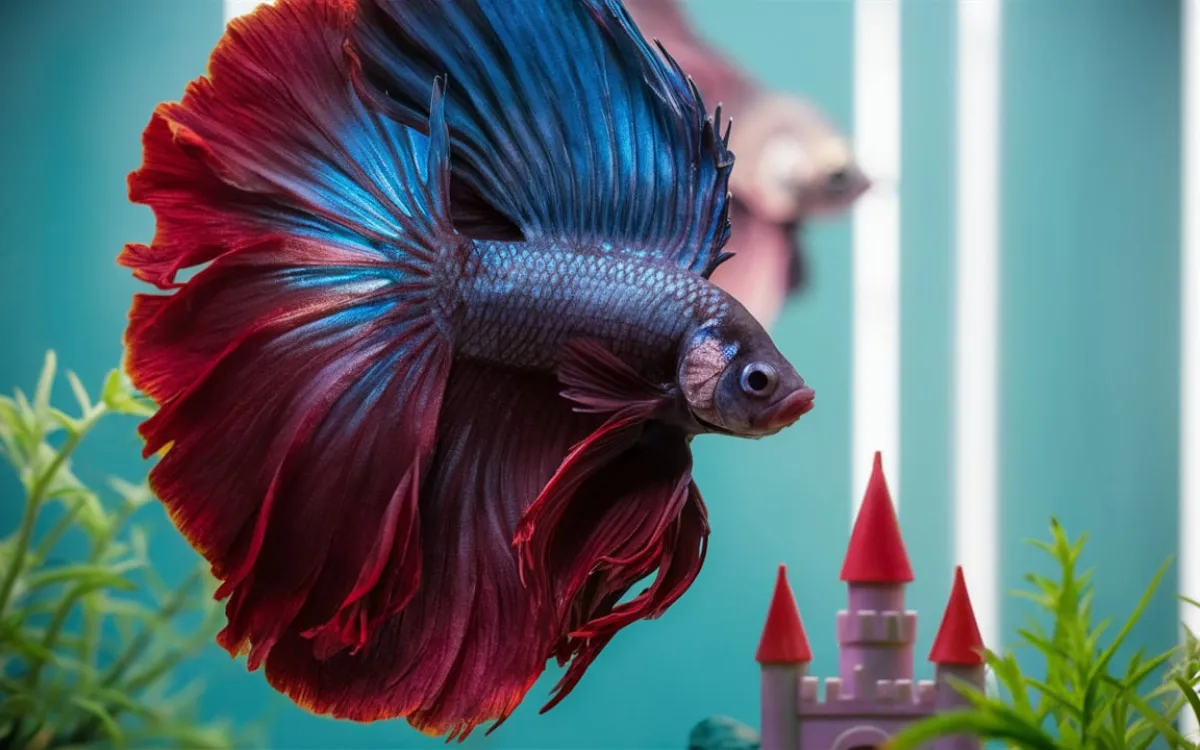Why Does My Betta Fish Keep Changing Color? Are you noticing your betta’s vibrant hues fading or shifting? Learn the reasons behind betta fish changing color, from stress and illness to natural aging.
Betta Fish Information will discover how to keep your betta healthy and vibrant with expert tips on water quality, diet, and environment.
Basics of Betta Fish Colors
Their genes determine the base colors, from vibrant blues to fiery reds, while pigments in their scales react to light, making their colors appear more intense or fade depending on their environment and health. It’s a fascinating interplay of nature that creates the stunning beauty we see in bettas like Koi, Nemo, and Marble varieties.
Can Betta Fish Change Color?

Yes, betta fish can change color, but it’s not like a chameleon instantly switching hues. Here’s a breakdown:
Age-Related Changes
Just like us, bettas change as they age. Some colors might become more vibrant, while others fade—it’s natural! Don’t worry if your older betta isn’t as bright as they used to be. Think of it like a fine wine, aging beautifully! For example, a Koi Red Betta might develop a deeper, richer red as they mature.
As long as your betta is eating well, active, and has clear fins and eyes, they’re likely healthy. Appreciate the unique beauty that comes with age, and cherish your betta at every stage of their life.
Stress
Stress is a major player in the betta color game, often acting as a dimmer switch for their vibrant hues. Poor water quality, high ammonia levels, incompatible tank mates, or a diet lacking essential nutrients can all contribute to faded or dull colors. It’s like a constant low-grade stress that saps their energy and color vibrancy.
It’s a powerful reminder that providing a healthy and stress-free environment is essential for not only the well-being of your betta but also for preserving their stunning, natural beauty. So, pay attention to your betta’s environment, address any potential stressors, and watch as their colors come back to life!
Health Issues
While stress is a common culprit for faded betta colors, sometimes a change in color can be a red flag for a more serious issue. Diseases or parasites can also cause colors to fade, making it crucial to pay attention to any sudden or significant changes.
For example, fin rot, a bacterial infection that affects the fins, can cause a loss of color and make the fins appear ragged or discolored. Dropsy, a condition that affects the internal organs and causes swelling, can also lead to color fading and a bloated appearance.
Water Conditions
The condition of the water in your betta’s tank is a crucial factor in maintaining their vibrant colors. Just like a delicate flower needs the right soil and sunlight, bettas need the right water parameters to thrive.
Maintaining the correct water parameters is essential for keeping your betta healthy and vibrant. Regular water changes, using a water testing kit to monitor the pH, temperature, and hardness, and adjusting as needed will ensure your betta’s environment is optimal for their health and color.
Positive Color Changes
This positive change in coloration is a testament to your dedication and care. It’s a rewarding experience to see your betta’s colors brighten as a result of your efforts. It’s like a visual confirmation that you’re providing the right conditions for them to flourish.
Essential Care Tips for Vibrant Betta Colors
Optimal Water Conditions: Aim for 25-50% water changes weekly to maintain good water quality. This helps remove waste products and keeps the water fresh and clean. Maintain a consistent temperature between 78-82°F.
Regular Observation: Watch for fin rot, dropsy, or other health issues. Early detection is key to successful treatment. If you notice rapid color changes or other concerning symptoms, seek professional advice. A qualified veterinarian specializing in aquatic animals can provide the best care.
Stress Reduction: Provide a tank of at least 5 gallons, ideally larger. A bigger tank allows for better water quality and more space for your betta to swim and explore. Consider peaceful snails, shrimp, or certain types of tetras. Choose tank mates carefully to ensure compatibility and minimize stress.
Lighting: Avoid direct sunlight, which can raise water temperature and stress your betta. Direct sunlight can also promote algae growth. Use a low-wattage bulb or a dimmer switch to create a comfortable environment. Choose a bulb that provides a natural light spectrum.
Conclusion
Don’t let fading colors dim the beauty of your betta fish! Understanding the causes of color changes, from stress to illness, is the first step to restoring their vibrant appearance. By addressing these issues through proper care, diet, and environment, you can help your betta regain their natural brilliance. Ready to bring back those vibrant colors? Learn more about betta care and discover the tips and tricks to keep your betta healthy and dazzling

Related Posts
The Samurai Betta Fish: Care, Breeding, and Varieties
The Elegance Of Female Betta Fish: A Comprehensive Guide
Understanding Super Red Betta Fish: A-to-Z Care Guide